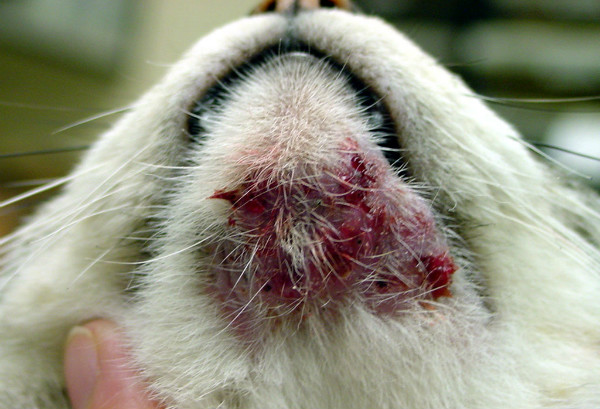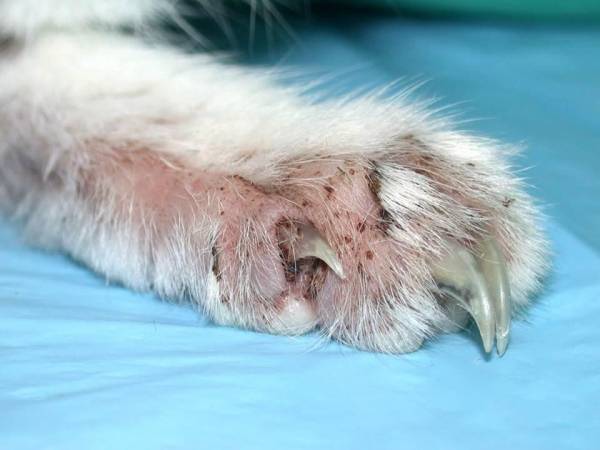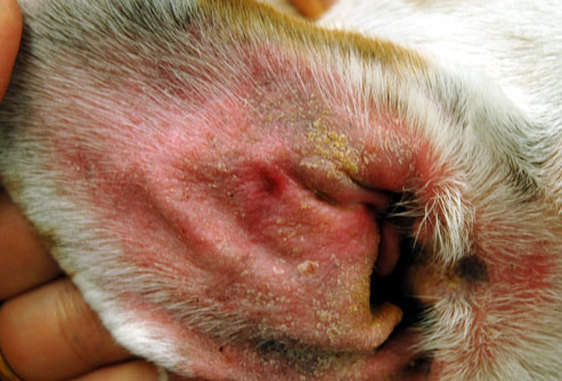Fungal diseases are a real scourge in both medical and veterinary practice. Often they are difficult to identify, and there are many problems with treatment. One of the classic pathologies (even if rare) is malassezia in cats. In this article, we will tell you in detail about this disease, its manifestations and methods of treatment.
Malassezia pachydermatis is a type of yeast. In the vast majority of cases, they are among the normal microflora of the skin and can be found in any animal. But sometimes something happens, after which the harmless yeast is sharply activated and causes a lot of problems. Usually these fungi are found in the external auditory canal, they are found in the anal sinuses, vagina and rectum. Malassezia can affect animals of all breeds and ages, gender differences also do not play any role.
Why can this microflora be activated? In general, the causes in this case are similar for all fungal infections. Any chronic and, in particular, hereditary autoimmune diseases that lead to a prolonged decrease in the immune status are classic predisposing factors. Cats suffering from any, or seborrhea, almost always have inflamed and irritated skin. Perhaps the best "bridgehead" for mushrooms can not be found.
Read also: The cat's skin is flaky: a table of symptoms and treatments
Symptoms and diagnosis
The most common symptom of Malassezia in cats is severe baldness. Acne on the chin, sudden seborrhea, and reddened, inflamed skin (pictured) can also indicate an infection. How to find out exactly about the cause of what is happening, because this symptomatology is typical for dozens of other diseases, often not related to fungi at all?

The best way to accurately identify this type of pathogen is microscopy by an experienced specialist. To obtain a sample, the method of scraping, washing is used, in some cases a piece of the affected tissue can simply be cut off from the ear of a sick animal. If a huge amount of yeast is detected during microscopy, the diagnosis can be considered confirmed. An even more accurate technique is the cultivation of the pathogen on a special nutrient medium. So the symptoms of malassezia in cats are a loose concept, you should not focus only on them when making a diagnosis.
Important! It should be borne in mind that Malassezia may be present on the skin of a healthy animal in any case. So there is always some doubt about the involvement of yeast in the appearance of symptoms. Therefore, the diagnosis is usually confirmed by the cat's response to treatment.
Therapy
Malassezia in cats can be treated in several ways. But once again we warn you that before starting therapy it is very important not only to identify the pathogen, but also to make sure that it was he who caused the disease. If treatment for a long time does not give a positive effect at all, a complete examination of the animal should be carried out in order to identify the true root cause of the pathology.
Read also: Cat has constipation: why and how to treat?

To create an unsuitable environment for the life of the fungus, it is necessary to remove excess fat from the cat's skin. For this, both specially designed shampoos and more familiar products can be used. A 1% solution of chlorhexidine has proven itself well. In severe cases, the concentration may be increased. Products containing benzoyl peroxide and sulfur are also used.
These substances not only create an unfavorable environment for fungi, but also degrease the skin, which is especially useful in secondary seborrhea. It should be remembered that when caring for an animal, it is useful to use products containing ketoconazole for personal hygiene. Of course, malassezia has not been identified in humans, but the pathogenic fungus very often causes severe allergies, also known as "cosmetic lichen". In addition, these fungi can disrupt the natural pH response of human skin, which can also lead to various unpleasant consequences.
For the treatment of localized cases of the disease, antifungal ointments are used at least twice a day for several weeks. If the cat's skin is affected by fungi by more than 20-30%, or if the localized mycelium is resistant to treatment, oral ketoconazole is prescribed, as well as fluconazole or itracosol. All these funds should be used for several weeks, until the complete disappearance of the clinical signs of the disease. A reaction is usually seen after 1-2 weeks of treatment, but therapy should continue for another 3-5 weeks.

Important! These antifungals are highly effective, but due to their potentially dangerous side effects and toxicity, they should only be used under the supervision of a competent veterinarian.
